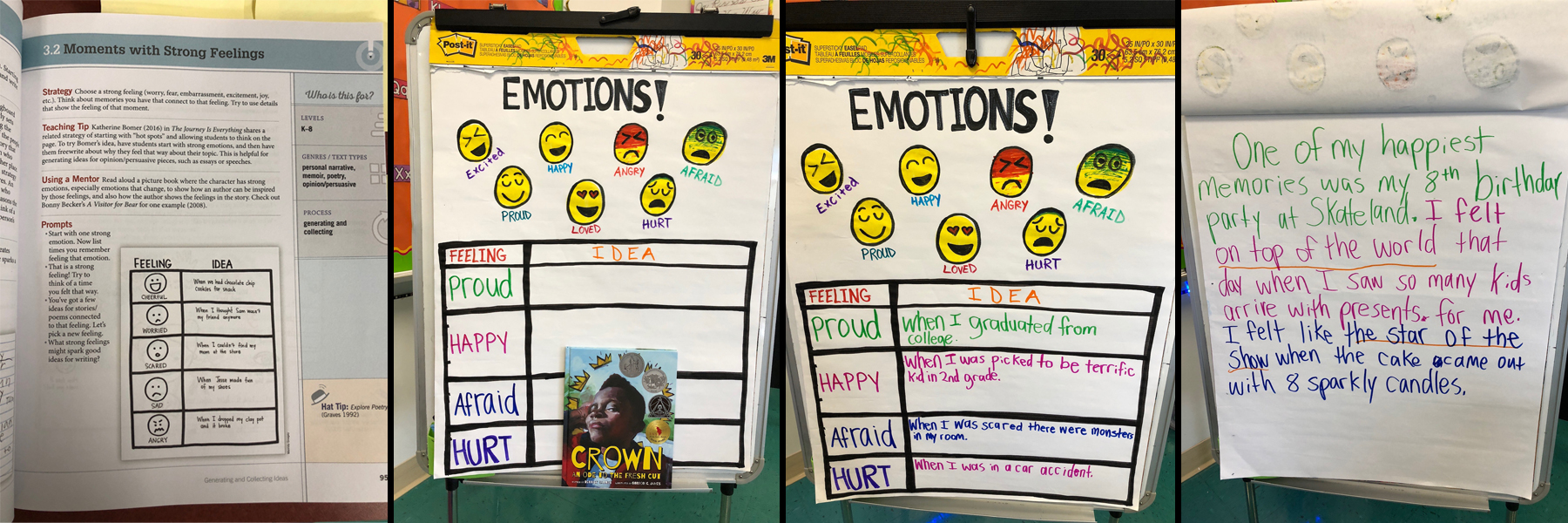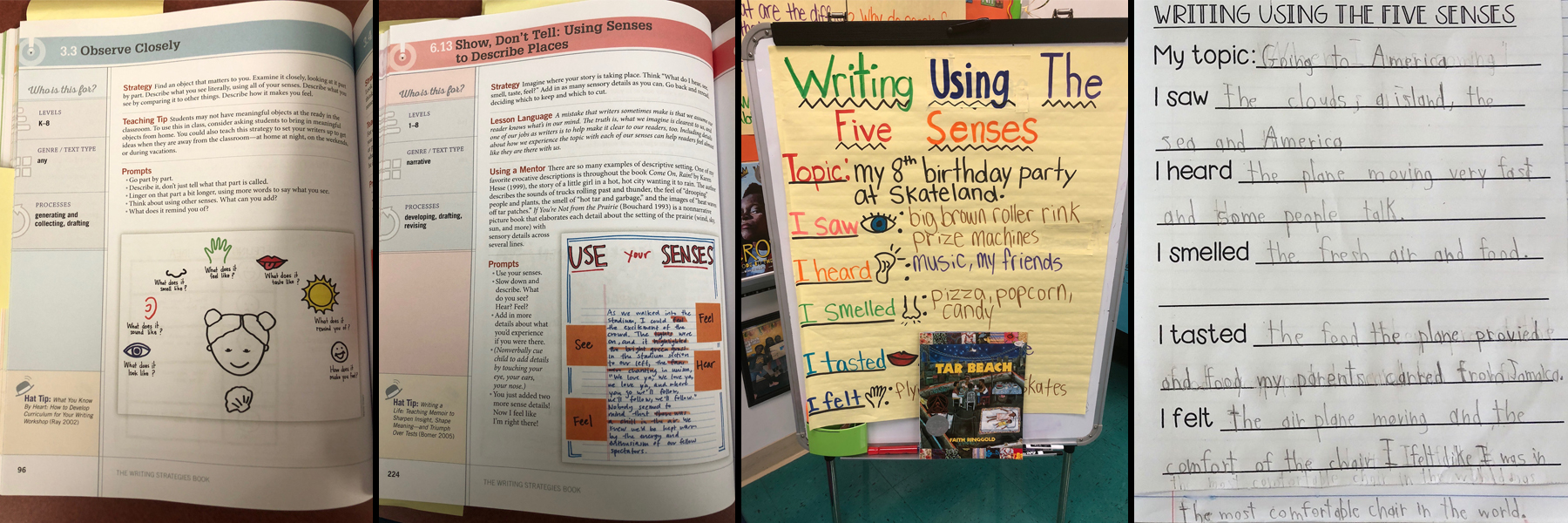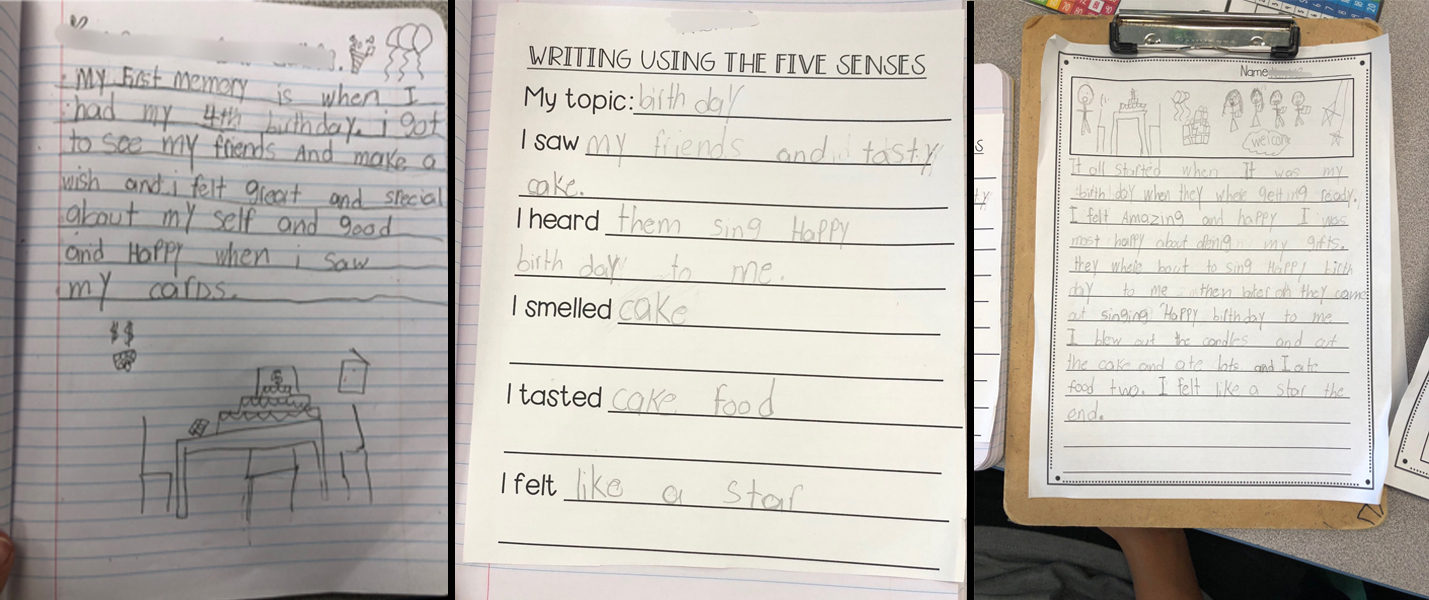Review: Jennifer Serravallo’s Go-To Books for Writing
THE MATERIALS
This year I wanted to focus on teaching my students to become strong, well rounded writers, so I was thrilled when I was offered the opportunity to try Jennifer Serravallo’s Go-To Books for Writing Collections, along with The Writing Strategies Book by Jennifer Serravallo. When I received the The Writing Strategies Book, I dove right in and to my delight I found it extremely user-friendly. The book is broken down into ten chapters, each of which represent an important writing goal. Each chapter is then broken down into one-page lessons by topic. The one-page lessons include a strategy for teaching the concept, a useful teaching tip or lesson language, how to use a mentor text to teach the strategy, and prompts to use with students. The side of each page details which grade levels the lesson is appropriate for, the genre/text types, which part of the writing process the lesson corresponds with, and a “hat tip” with a suggested resource for further reading. Last but not least, each page contains a picture of a teacher created process (or anchor chart) you can use with your students, which I found to be the most helpful. The great thing about this book is that you do not have to go in any particular order, you can browse the chapters and topics to find the lessons that will best meet the needs of your students and where they are on their writing journey.
After reading through The Writing Strategies Book, I moved on to the Go-To Books collections—I used the Grade 3 collection in my classroom. Created by Jennifer Serravallo as a companion to The Writing Strategies Book, the Go-To Books Collections come with fifteen books that can be used as mentor texts with the writing strategies lessons! After teaching several of the lessons, I can tell you that using these mentor texts to teach writing has truly been a game changer for my students and what I believe I was missing in years past. The mentor texts allow students to make authentic connections to the skills you are teaching and increase engagement tenfold.
DAY ONE
The first step in selecting a lesson to teach was identifying an area of need in my students’ writing. After working with my students for a few weeks, I saw that they needed guidance in generating and collecting ideas and drafting. I also observed that their writing was very one dimensional, lacking imagery and voice, so I started with topic 3.2: Moments with Strong Feelings (p. 95). This lesson teaches students to start at the beginning of the writing process (generating and collecting) by identifying strong feelings and connecting memories to them, which show the feeling of that moment. The lesson suggests using a mentor text where a character has strong emotions, so I selected the text Crown: An Ode to the Fresh Cut by Derrick Barnes from the Grade 3 Go-To Books collection. This wonderful book is about the magical experience a young boy has when he goes to the barbershop. The author uses vivid imagery to describe the feelings this young boy experiences when he gets a fresh haircut. My students were absolutely enthralled by this book. They could relate to the experience of the character and they were truly captivated by the writing style and illustrations. After we read the book, I engaged my students in a discussion about how they thought the character felt based on evidence from the text. I reread poignant lines from the book and asked my students to analyze them. My students were able to make the connection that the author used highly descriptive language and over-the-top comparisons for the purpose of conveying strong emotions. It was powerful for them to realize that this kind of rich language is what made the book so fascinating to them and that they could make their writing just as fascinating by using the same strategies as the author.

Images left to right: 1) Page 95 in “The Writing Strategies Book” that shows lesson 3.2: Moments with Strong Feelings; 2) pre-prepared anchor chart on emotions with mentor text “Crown: An Ode to the Fresh Cut”; 3) completed anchor chart; 4) chart paper showing completed shared writing exercise.
After we read and discussed the book, I asked my students to write about a memory with a strong emotion, just like the author from the book did. First, we practiced together using an anchor chart that I had created ahead of time. The chart showed visuals of several emotions at the top and had a blank table below the visuals with a row for feelings and a row for ideas or memories that were connected to that feeling. I gave an example for the first one and had the students discuss and share to fill in the rest of the chart. We then did a shared writing on chart paper to model how to use descriptive writing to describe how one of the memories felt. I chose the memory of my 8th birthday party because I knew it was something they would be able to relate to. During shared writing, the students contributed to the piece by sharing different ideas for descriptions of emotion. I was really impressed with their language, which I realized was a result of the beautiful examples they had heard in the mentor text.
Next, I gave each student a graphic organizer similar to the table we filled out together on the anchor chart and asked them to generate ideas for writing that were connected to strong emotions. After they completed the organizer on their own, I told them to choose one entry (emotion and memory) from their graphic organizer and write a rough draft in their journal of the experience, keeping in mind to use their writing to convey how the memory felt. The students were highly engaged in this writing activity and took great pride in their work. After they were finished, I had them save their work so that we could build on it the next day.

Images left to right: 1) Graphic organizer that was completed by a student; 2) four students working on their graphic organizers; 3) graphic organizer that was completed by a second student.
DAY TWO
It was important for me to have my students continue to work on the same piece of writing to teach them that writing is a process. After reading their drafts, I could see that my students needed a lesson about adding more sensory description to their writing. I used lesson 3.3: Observe Closely (p. 96) and lesson 6.13: Show, Don’t Tell: Using Senses to Describe Places (p. 224) to teach this next skill. For this lesson, I selected the mentor text Tar Beach by Faith Ringgold from the Grade 3 Go-To Books collection. This is a beautifully descriptive book about an 8-year-old girl flying above her rooftop in the city, experiencing and describing its wonders. My students really connected to this book and were able to discuss how the author used descriptions about what she saw, heard, tasted, smelled, and felt to draw her readers in. I explained that we were going to return to the memory we had written about yesterday and build on it by writing about the five senses we experienced in that moment.

Images left to right: 1) Page 96 in “The Writing Strategies Book” that shows lesson 3.3: Observe Closely; 2) Page 224 in “The Writing Strategies Book” that shows lesson 6.13: Show, Don’t Tell; 3) completed anchor chart on writing with the five senses; 4) graphic organizer on the five senses that was completed by a student.
First, we completed another anchor chart together to identify sensory information about the experience from the shared writing the day before (my 8th birthday party). My students understood that adding this information to our writing was important in order to make it stronger because they had seen how Faith Ringgold used sensory descriptions in Tar Beach. They were excited to try it for themselves!
Next, I had my students fill out a graphic organizer similar to the one on our anchor chart to identify what they experienced through each of the five senses during the memory they had written about the day before. Then I had them revise their draft to include the sensory descriptions. My class was totally engrossed in this writing activity and put forth great effort. I was so impressed with how much their new drafts had improved. Below you can see an example of the progression one of my students made over the two days using these lessons and mentor texts.

Images left to right show a single student’s progress on the project: 1) Student’s rough draft paragraph from day one; 2) completed graphic organizer on writing using the five senses 3) final descriptive paragraph from day two.
I would highly recommend the Jennifer Serravallo Go-To Books for Writing from AKJ Education as well as The Writing Strategies Book. The book is incredibly helpful and easy to use. It is perfect for a teacher looking to customize their instruction to develop stronger writers. The Go-To Books for Writing collection provided the perfect mentor texts to accompany the lessons and showcase the strategies from The Writing Strategies Book for my students so they were able to emulate them in their own writing.
I feel that these lessons have made a lasting impact on my students and now they will be able to take the skills that they have learned and apply them to more challenging topics without frustration. The other thing I appreciate about this approach to teaching writing is that students enjoy it and it fosters a positive attitude about writing. The first weeks of school I heard many students in my class making negative comments about writing and showing reluctance to write, so I was shocked when I saw my students so deeply engaged and excited about these lessons. As I have continued to use strategies from the book in combination with the mentor texts, I have noticed a huge shift in the attitudes of my students towards writing. It is now something they look forward to and get excited about. As a teacher, that is the best gift. If you are looking to transform the way you teach writing into something that will foster lifelong writers, this is it!





